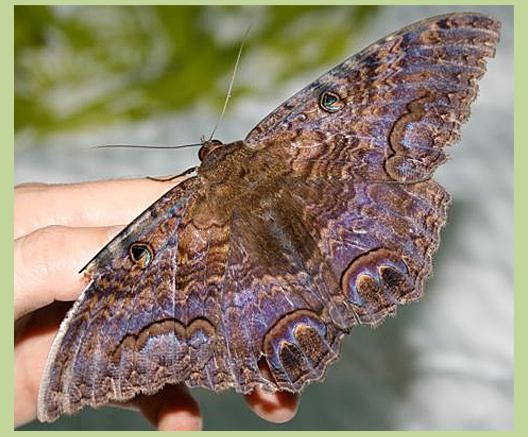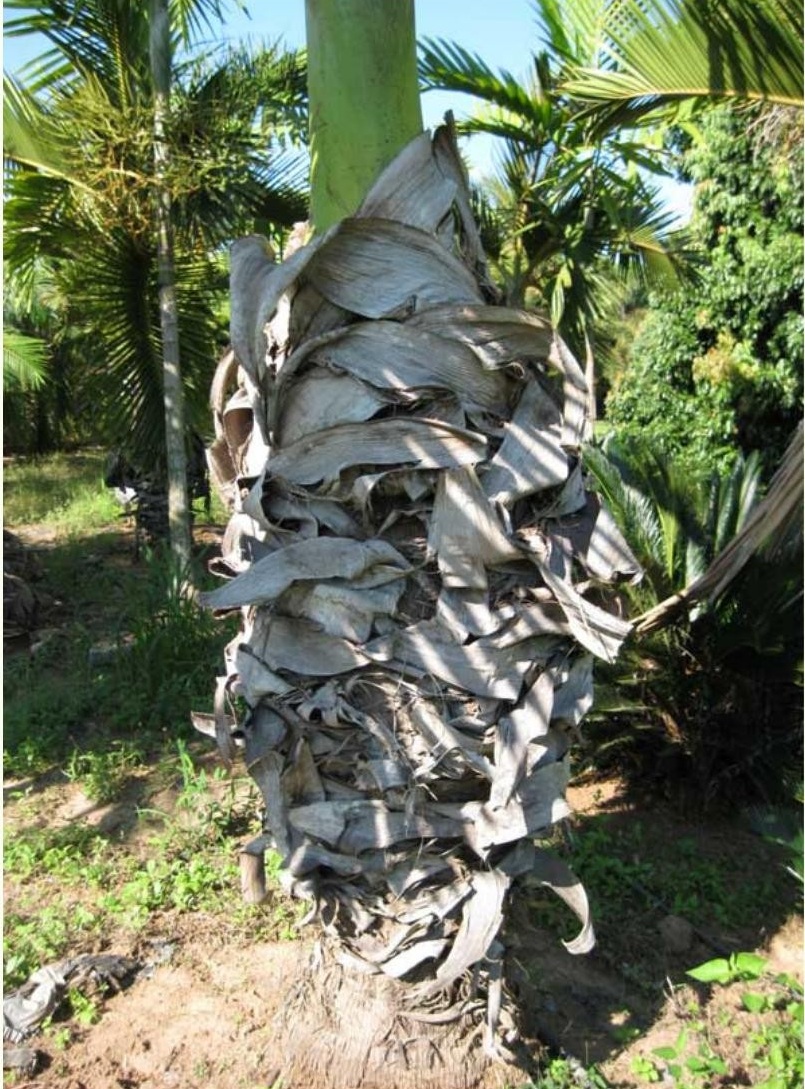By Terry Sovil from the October 2010 Edition
Multiple sightings of these messengers in Manzanillo!
My sighting of my first one was just prior to a downpour when the thunder had been rolling for 30 minutes and the skies were black. I glimpsed this huge “thing” on the brick wall. Could this be an omen? Perhaps because I saw another, smaller one, in almost the same place two days later.
Tropical in origin, this is the largest moth seen north of Mexico. Its formal name is Ascalapha odorata and its wingspan can exceed 7 inches. Not actually black it is more dark brown with zigzag lines. A number “9” or paisley shape on the forewing is a prime indicator. The females have a white stripe midway along the wing and are slighter lighter in color than the males.
The Black Witch moth generally flies only at night. During the day you may see one under eaves, a carport or porch awning. They are attracted to soft overripe fruit. The beginning of the rainy season in Mexico triggers a northern migration where they are often seen in the American southwest. They breed year round and retreat southward in the fall.
They are frequently mistaken for bats as they are large and fly like bats. Because of the similarity there are many superstitions that have evolved around this moth. Black Witch moths have tympanic organs or ears that detect the echolocation signals generated by bats. This hearing helps them avoid real bats when both are flying at night.
The Black Witch moth does not bite, sting, or carry diseases. It has only a straw-like proboscis or tongue to drink flower nectar through. It is perfectly harmless but can cause a reflex jump and perhaps a scream if you happen to flush one out from a daytime hiding spot.
In Mexico they are called the mariposa de la muerte (butterfly of death) and were known to the Aztecs. It is said that when a person is sick and this moth enters the house the sick person dies. A variation from southern Texas says that death only occurs if the moth flies in and visits all four corners of the house. In parts of Mexico if one flies over someone’s head the person will lose their hair. In Hawaii if a loved one has just died the moth is an embodiment of the person’s soul returning to say goodbye.
In some Caribbean populations, the Sorciere Noire is believed to be an actual witch in disguise, and to see it means someone has cast an evil spell on you. In Jamaica it is called a Duppy Bat, and believed to be a lost soul. In parts of the Bahamas, folklore calls them Moneybats, and tells that they bring prosperity. I guess I like the Moneybats superstition the best as we can always use a little prosperity!
The northward migration of the Black Witch appears to be triggered by the rainy season in Mexico; typically June through October. It appears they are able to migrate great distances even over open water. In September 1998 large nocturnal moth migrations including Black Witches were reported as regular occurrences on several oil platforms off the coast of Louisiana.
How these moths behave in the fall is not well known. In Texas, many tropical butterflies annually stray north from Mexico in September and October. Favorable conditions for Mexican butterfly strays in the fall include milder temperatures, continuing southerly winds, and higher rainfall which induces caterpillar food plants to put on fresh growth.
If you see one of these moths during the daytime you can get very close to grab a picture!
Download or view The October 2010 magazine
—
Terry is a founding partner and scuba instructor for Aquatic Sports and Adventures (Deportes y Aventuras Acuáticas) in Manzanillo. A PADI (Professional Association of Dive Instructors) Master Instructor in his 36th year as a PADI Professional. He also holds 15 Specialty Instructor Course ratings. Terry held a US Coast Guard 50-Ton Masters (Captain’s) License. In his past corporate life, he worked in computers from 1973 to 2005 from a computer operator to a project manager for companies including GE Capital Fleet Services and Target. From 2005 to 2008, he developed and oversaw delivery of training to Target’s Loss Prevention (Asset Protection) employees on the West Coast, USA. He led a network of 80+ instructors, evaluated training, performed needs assessments and gathered feedback on the delivery of training, conducted training in Crisis Leadership and Non-Violent Crisis Intervention to Target executives. Independently, he has taught hundreds of hours of skills-based training in American Red Cross CPR, First Aid, SCUBA and sailing and managed a staff of Project Managers at LogicBay in the production of multi-media training and web sites in a fast-paced environment of artists, instructional designers, writers and developers, creating a variety of interactive training and support products for Fortune 1000 companies.




You must be logged in to post a comment.